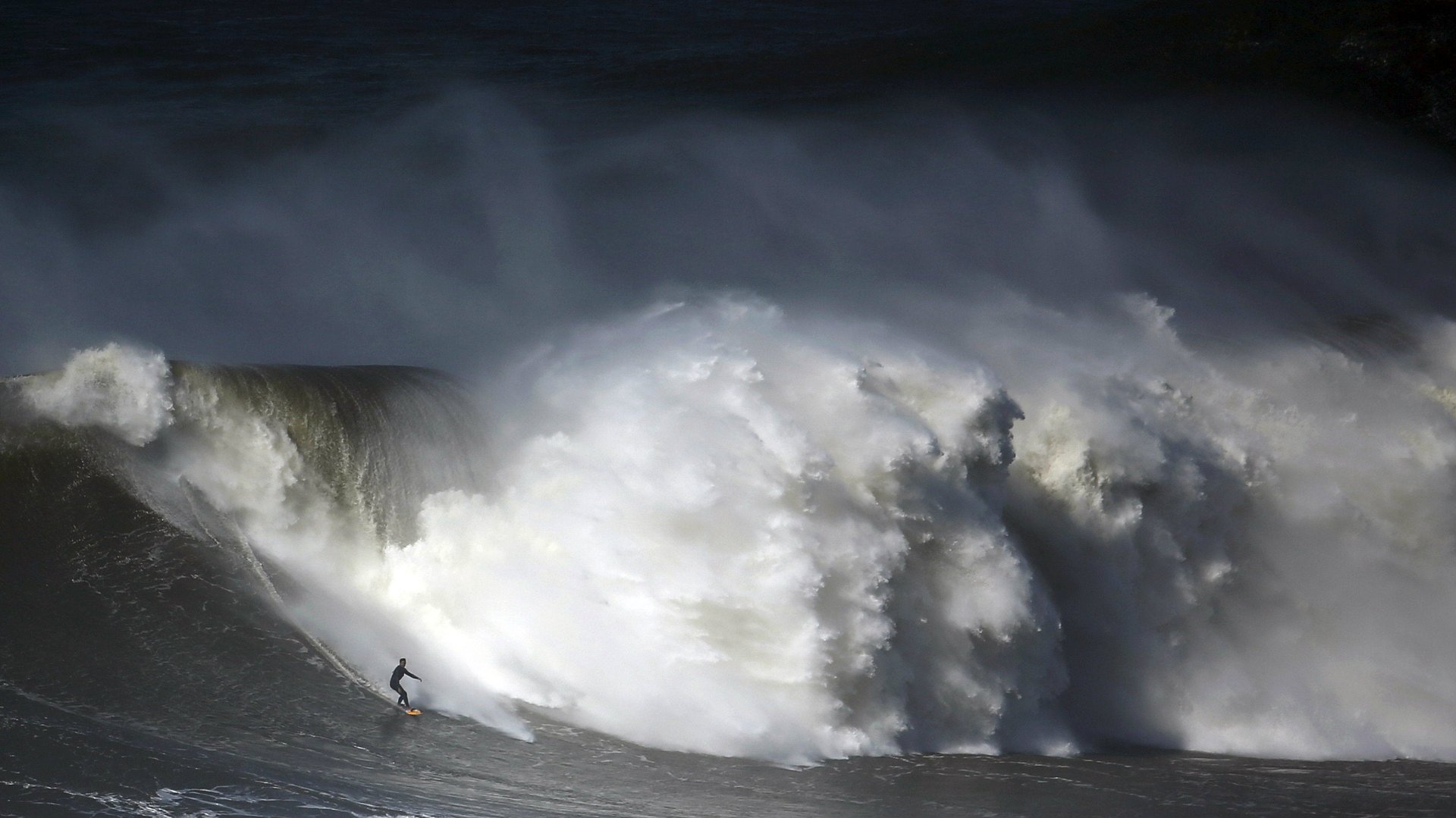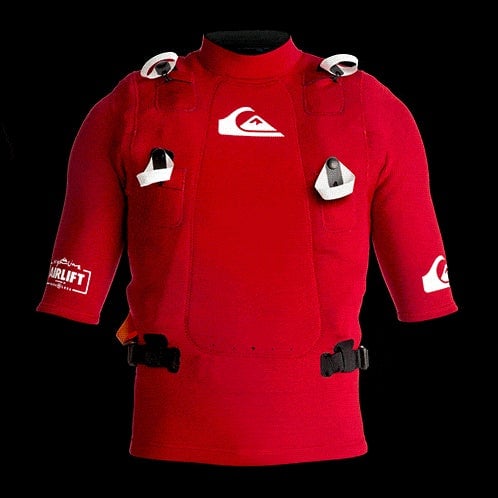A big wave surfers’ guide to taking calculated risks
North Shore, Oahu, Hawaii


North Shore, Oahu, Hawaii
To an outsider, it looked all wrong. About 70 tanned, broad-shouldered men (and three women) in shorts, flip-flops, and t-shirts gathered in a fluorescent-lit conference room to discuss risk management. This is not their natural environment; it is mine. I am a pension economist, so sitting in windowless rooms watching PowerPoint presentations is what I do.
This room—in Hawaii, no less—was not full of actuaries, but big wave surfers. I was at the annual Big Wave Risk Assessment Group (BWRAG) safety summit. The scene may have seemed incongruous, but at the event I sat in on one of the most thought-provoking discussions on risk and the role of regulation I’ve ever heard, anywhere. There is plenty actuaries and financiers can learn from them.
Big wave surfing culture has changed in recent years. The sport has evolved from the macho pursuit of the biggest waves—generally speaking, around 20 feet or higher—into one where nothing is left to chance and any technology that reduces the risk of injury is embraced. “You get tired of seeing people dying,” big wave rider Mark Healey explained.
The sport has grown in the last few decades from a few dozen hardcore surfers to hundreds from all over the world. This was enabled by technology, like the jet ski, which made big waves more accessible to surfers. The wider availability of wave data online has also transformed the sport, with surfers obsessively tracking conditions all over the world to identify the right time and place to catch the perfect waves. “Now you see 18-year-old guys surfing the kinds of waves [big wave pioneer] Greg Noll wouldn’t even try,” said Ian “The Surf Professor” Masterson.
This comes with a downside. No technology can make surfing a 70-foot wave safe. And because these surfers tend to congregate in the same place, deaths tend to happen in view of a large part of the community. This changed the culture to one where risk minimization become a priority.
Save yourself
The BWRAG summit started in 2014, a few years after famed surfer Sion Milosky drowned while surfing big waves at Mavericks, off the coast of Northern California. One of the founders is Brian Keaulana, a multi-generational lifeguard, waterman, and surfer, who decided all surfers should have advanced lifeguarding skills, “so they can rescue themselves if there is no lifeguard around.”
The first summits were informal and featured a few surfers sitting on the floor a barn in the North Shore of Oahu. Now, about 70 attend, including professional lifeguards from all over the world. The goal is to bring together the latest thinking in safety from around the world and establish best practices. It is like the OECD for surfers.
The summit teaches life-saving skills, CPR, how to hold your breath, and more. Special forces officers from the military taught us how to tie a tourniquet. Then, for something completely different but no less important, surfers also learned some statistics. To understand big waves, surfers must check data constantly, perform calculations, and balance predictions from various forecasting models. When a big wave is brewing, Healey says he checks the data dozens of times each day, “just like my friends trading stocks.”
The latest big innovation in big wave surfing is inflatable vests. “A few years ago, no one would want to be seen wearing a vest,” said Masterson. “Now everyone does.”

The vest, depending on the brand, goes under or over a wetsuit. When a surfer wipes out, he pulls a tab and the invest inflates to a full-size life preserver, keeping a surfer’s head above water. Although this equipment can be critical to preventing drowning and saves lives, it is not without controversy. More people than ever are attempting to ride big waves, even those with weak swimming and surfing skills. The vests could make a dangerous sport more accessible and appealing to outsiders who don’t appreciate the risks involved.
This is a problem because weak surfers on big waves don’t just pose an obvious danger to themselves. If something happens to them, rescue efforts divert resources from more experienced, professional surfers who also need rescuing sometimes. It also increases the odds of surfers crashing into each other. “There is just more chaos in the water,” Healey explained.
Enough is enough
Other potentially dangerous water sports, like scuba diving, require certification. But nothing stops anyone from attempting big waves. (This economist was not tempted.) Improved safety devices sound good, but might encourage more people taking risks they shouldn’t. The Quiksilver vest, for example, comes with a warning:
Use of this product could cause serious injury or death, including death by drowning. Proper use is designed to reduce certain risks but does not guarantee users safety. Proper use requires product fitting, training, and adherence to manufacturer’s instructions. Only use this if you are experienced in the environment in which it will be used. Do not take greater risks while using this product.
The surfers at the summit debated if this warning was sufficient. Patagonia requires buyers of its vest to attend BWRAG classes. Quiksilver doesn’t require a class, and this is divisive in the big wave community. Many surfers at the summit argued the burden should fall on the vendors to identify who should be able to buy the vest. “I think Patagonia is doing it right, Quiksilver is just about making money,” said one surfer.
Is something wrong with that? These vests are expensive to make, and sell for around $1,000. It may be too much to ask vendors to act as both innovators and regulators. In order for new safety devices to be developed, producers need to turn a profit. And the bottom line is that the vest will save lives.
If you can’t rely on vendors, though, perhaps big wave surfing should require a license. No surfer I spoke with liked that idea.
“We need to keep that formal shit out of surfing,” said Healey. “The last thing you want is the government involved in surfing.” Surfers already self-regulate, he noted. They can spot inexperienced surfers in a line-up and gently tell them to leave.
More crowded line-ups at big waves make this more difficult, Masterson said. But since surfing is a “pure, free expression,” he also resisted the idea of formal regulation. He likes the idea of more education, and says the state of Hawaii requires some classes before people are allowed to tow-in surf (jet-ski assisted surfing) in certain conditions.
Technology that offers more safety invariably emboldens people to take more risk. Seat belts reduce traffic deaths and also are associated with driving faster. Financial derivatives and related insurance contracts are meant to make markets safer, but also encourage risk taking.
The government normally steps in to regulate safety-enhancing technologies when the risks involved pose harm to others. The surfing community, unlike the finance, pharma, or auto industries, still mostly self-regulates. This is largely out of necessity and also a culture that, so far, rewards risk taking when coupled with good risk management. Throughout the summit I kept wondering why financial services, where discussions are often more about how to achieve higher returns than how to reduce risks, can’t strike a similar balance.